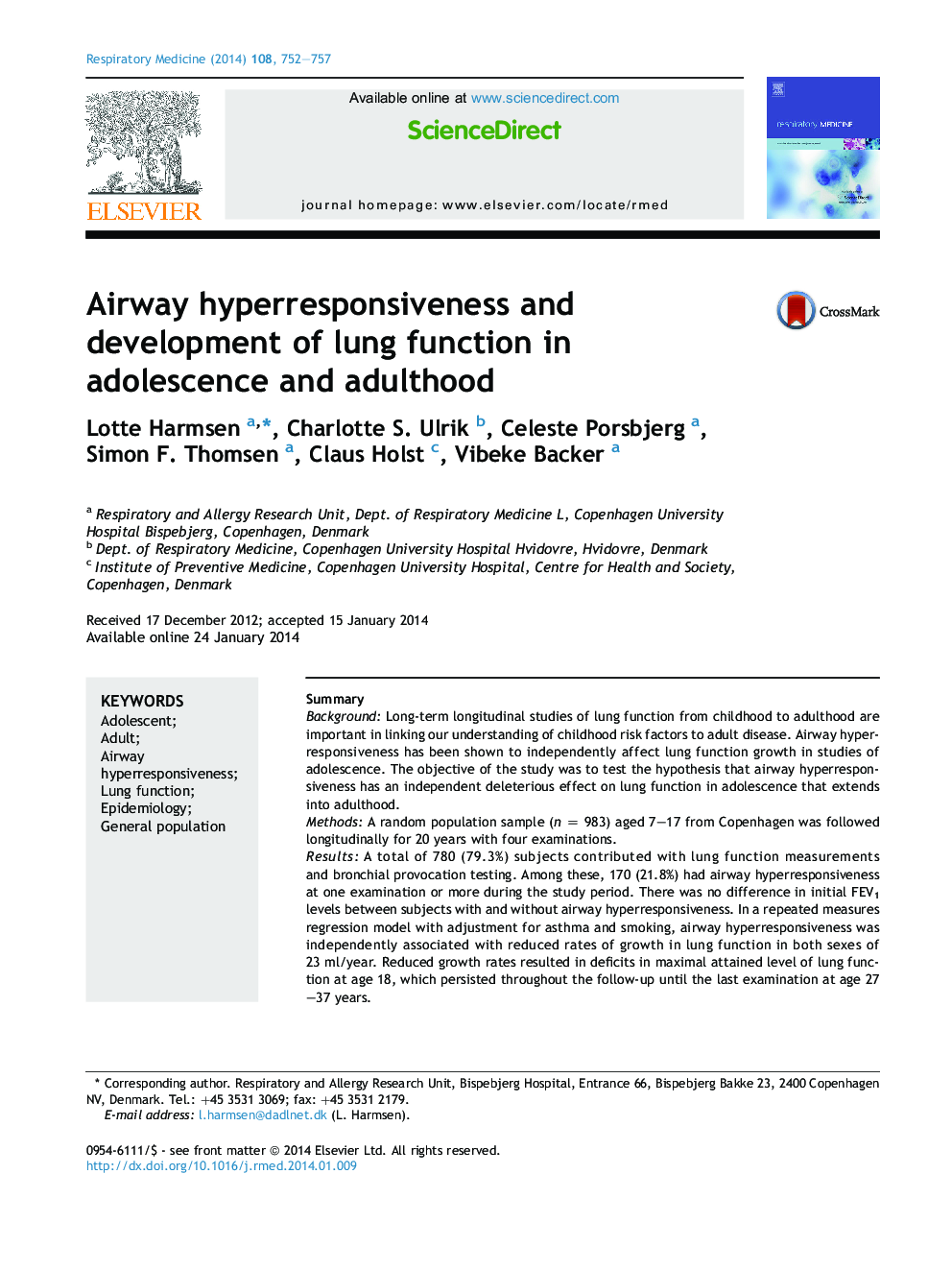| Article ID | Journal | Published Year | Pages | File Type |
|---|---|---|---|---|
| 4210281 | Respiratory Medicine | 2014 | 6 Pages |
SummaryBackgroundLong-term longitudinal studies of lung function from childhood to adulthood are important in linking our understanding of childhood risk factors to adult disease. Airway hyperresponsiveness has been shown to independently affect lung function growth in studies of adolescence. The objective of the study was to test the hypothesis that airway hyperresponsiveness has an independent deleterious effect on lung function in adolescence that extends into adulthood.MethodsA random population sample (n = 983) aged 7–17 from Copenhagen was followed longitudinally for 20 years with four examinations.ResultsA total of 780 (79.3%) subjects contributed with lung function measurements and bronchial provocation testing. Among these, 170 (21.8%) had airway hyperresponsiveness at one examination or more during the study period. There was no difference in initial FEV1 levels between subjects with and without airway hyperresponsiveness. In a repeated measures regression model with adjustment for asthma and smoking, airway hyperresponsiveness was independently associated with reduced rates of growth in lung function in both sexes of 23 ml/year. Reduced growth rates resulted in deficits in maximal attained level of lung function at age 18, which persisted throughout the follow-up until the last examination at age 27–37 years.ConclusionAirway hyperresponsiveness has an independent deleterious effect on lung function development from 7 to 37 years resulting in a lower maximal attained lung function and persistent deficits in lung function in adulthood.
